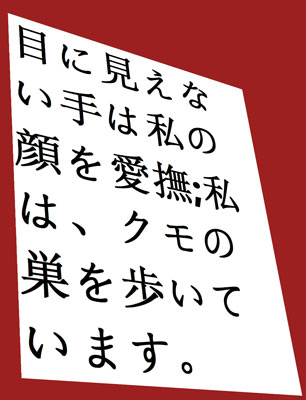The Japanese tanka is a verse form from classical Japanese poetry. Even older than its better-known poetic cousin the haiku, the tanka is a quiet, meditative form that focuses on the natural world and the poet's emotions. A tanka is essentially a haiku (three lines consisting of 5, 7, and 5 syllables each), except it has two additional lines of 7 syllables each.

Traditionally, the tanka begins with an observation of a natural scene:
Invisible hands
caress my face; have I walked
through a spider's web
woven this morning to catch
flies writhing with my surprise
Many poets find that the tanka falls naturally into a haiku followed by a couplet. The haiku tends to focus more on observation, the couplet on reflection. But you don't have to observe this movement in your own writing. The tanka is a syllabic form, so just follow these simple rules:
Avoid end-rhyming the lines.
Vary the rhythms from line to line.
Use enjambment (continuing a statement from one line to the next without pause) to keep sentences and clauses twisting around the ends of the lines.
Avoid ending too many lines in a row with a one-syllable word.

